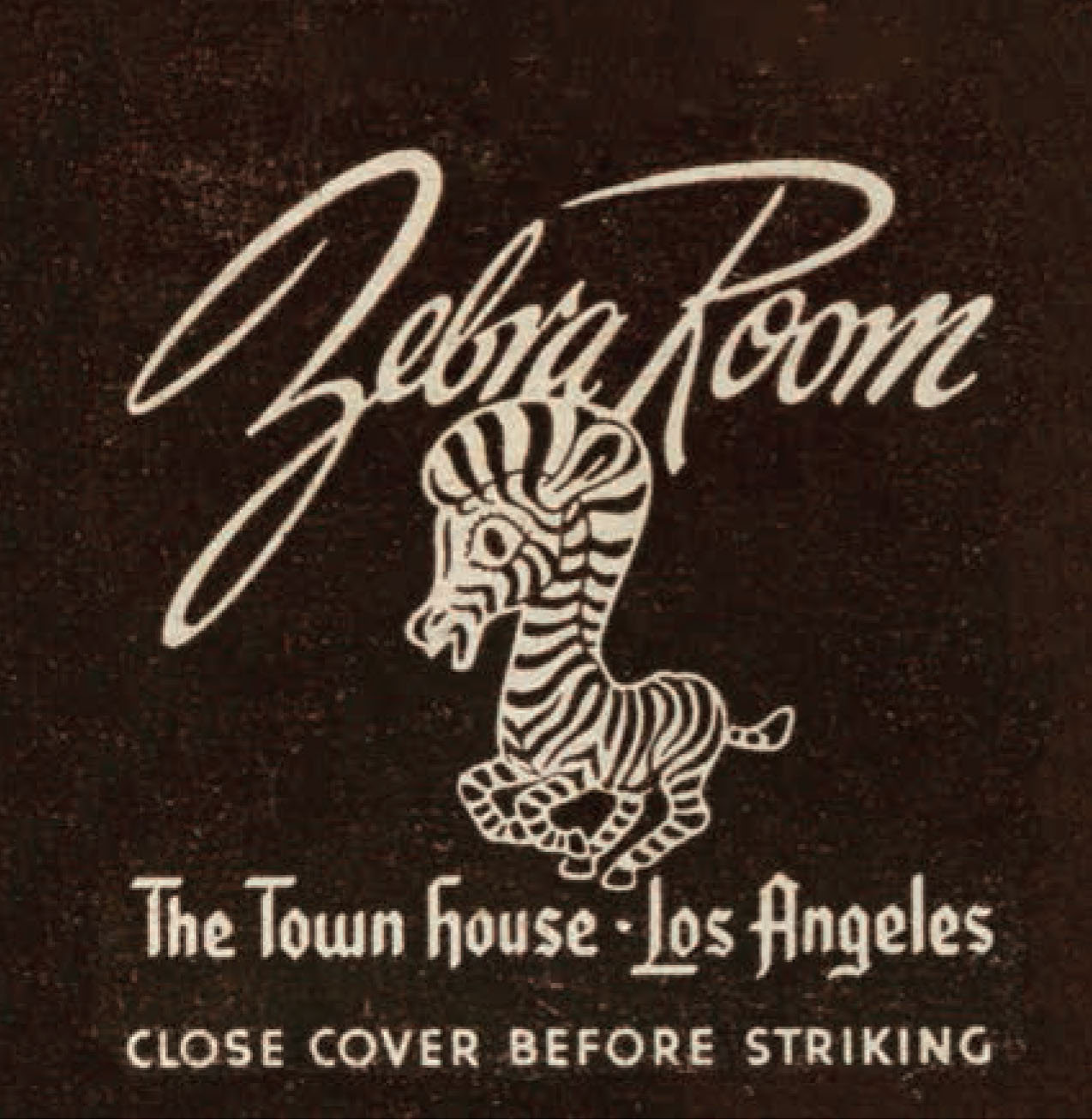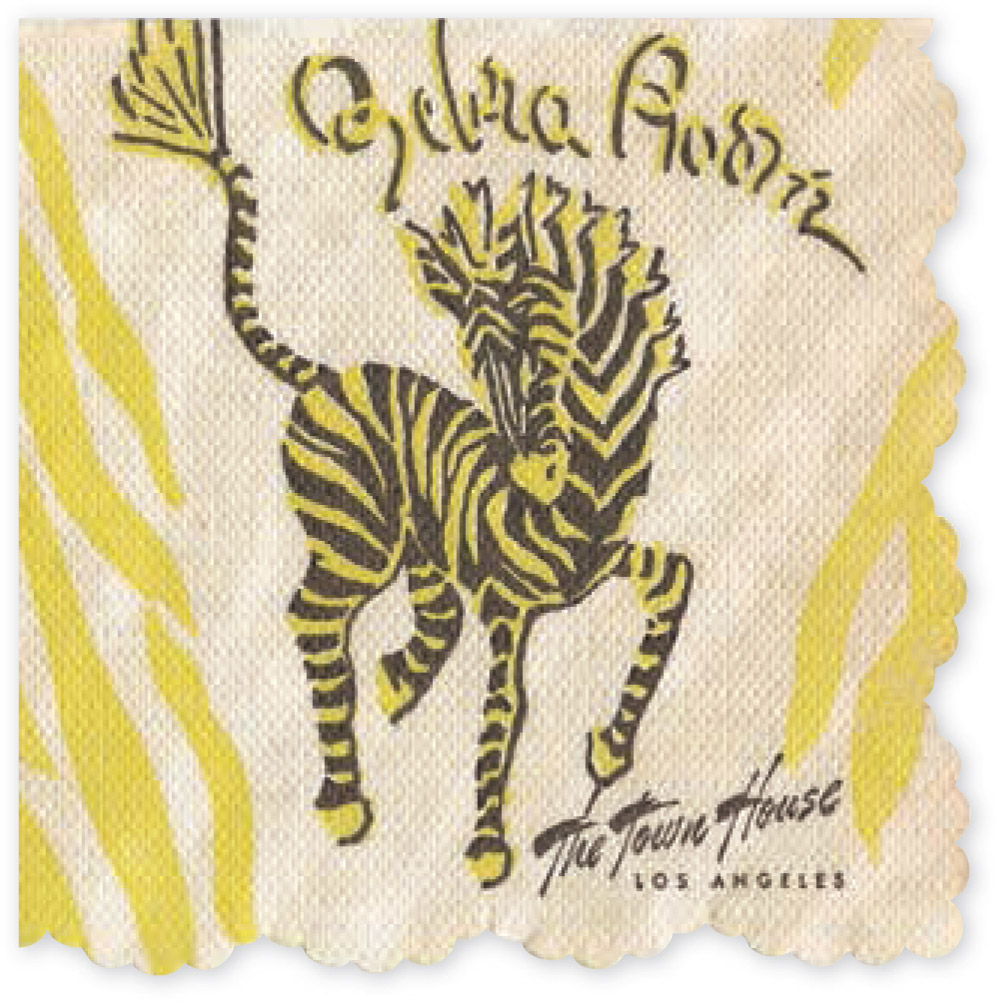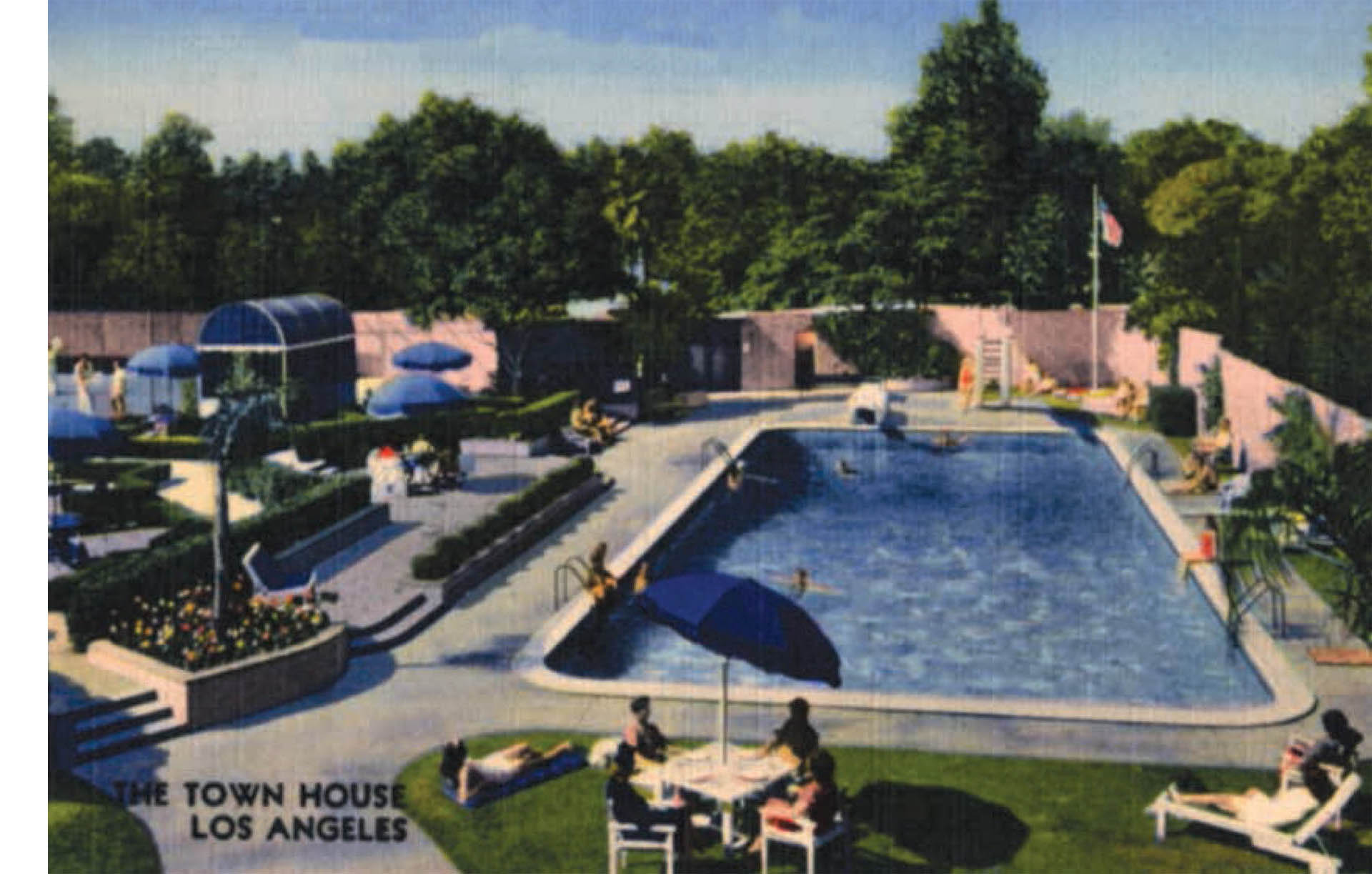Zebra Room at the Town House of Lafayette Park
OPEN: 1929–1993
LOCATION: 2961 Wilshire Boulevard Los Angeles, CA 90010
ORIGINAL PHONE: DU 2-7171
CUISINE: American
DESIGN: Norman W. Alpaugh (Town House Building); Wayne McAllister (Zebra Room)
BUILDING STYLE: Beaux Arts Classicism
CURRENTLY: Filming Location

IN 1929, OIL MAGNATE EDWARD DOHENY OPENED THE TOWN HOUSE, A LUXURY APARTMENT BUILDING BILLED AS “SOUTHERN CALIFORNIA’S MOST DISTINGUISHED ADDRESS.” Located across the street from Lafayette Park Place on Wilshire Boulevard, the Town House served as the backdrop for the Charlie Chaplin film City Lights in 1931.
In 1937, the Town House was renovated and re-launched as a luxury hotel. As a smaller boutique establishment, it offered a different kind of experience than the 1,200-room Ambassador (see page 35) down the street. While the Town House didn’t have the space to provide the amenities found at the Ambassador, it did have the Zebra Room, a swanky supper club that became one of the most glamorous nightclubs in the city. Designed by Wayne McAllister, the Zebra Room interior was true to its name, featuring zebra-striped dinnerware, chairs upholstered with zebra-print fabric, a mural of an African safari on one wall, and jungle prints, wooden masks, and spears for decoration.
The Zebra Room attracted slews of celebrities. Bing Crosby, Tallulah Bankhead, Henry Ford, Marilyn Monroe, and Gina Lollobrigida often enjoyed food and drinks at the restaurant before seeing live shows or going dancing at the Cocoanut Grove. With Bullocks Wilshire (see page 81) just across the street, many stars stayed at the hotel and got their shopping fix at the ritzy department store. Howard Hughes rented one of the top floor suites for a while.
In 1942, hotelier Conrad Hilton took over the building and transformed it into the Hilton Town House, one of the most luxurious hotels in Southern California at the time. Overlooking Lafayette Park Place, the top floors provided views of downtown Los Angeles, only ten blocks away. The brick and terra cotta exterior facade featured rich classical detailing. In 1950, Conrad Hilton’s son, Nicky, married Elizabeth Taylor in the hotel’s lush central gardens.
In 1954, Hilton sold the fourteen-story hotel to the Sheraton Corporation, and the name was changed to the Sheraton West, keeping the Zebra Room intact for a while. Later, they changed the name to the Sheraton Town House and erected a large, red neon sign that could be seen from downtown. In the 1970s, the hotel made several appearances on the TV show Charlie’s Angels.

In the late 1980s, transients and drug dealers took over the nearby MacArthur and Lafayette Parks. Many of the single-family homes in the area were bulldozed and replaced with larger multi-unit dwellings. The L.A. Riots of 1992 took a toll on the area as well. It was the beginning of the end; the Ambassador closed, and then Bullocks Wilshire. The Town House soon followed.
Six months after it closed, the hotel’s Tokyo-based owners wanted to level the historical building and turn it into a parking lot, but the Los Angeles City Council blocked the demolition. In 1994, the building was named a Los Angeles Historic-Cultural Monument, and then listed in the National Register of Historic Places two years later. In 2001, the building was converted into low-income housing. The remainder of the building is now used to film movies and television shows, and the Zebra Room and ballrooms can be rented out for parties. 
![]()

The Zebra Room, 1940.

Postcard featuring the Town House pool, 1951.

The Zebra Room’s dining area, 1939.